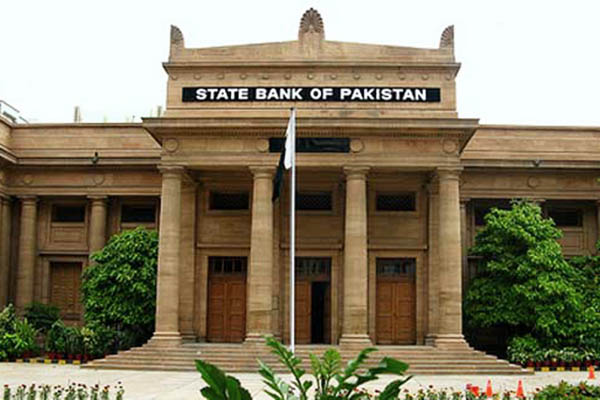
File photo of the State Bank of Pakistan. No Credit
State Bank of Pakistan says $662 million deficit primarily caused by a boost in imports without similar increase in exports last month
After five months of surplus, Pakistan’s current account posted a dramatic drop in December 2020, with the State Bank of Pakistan on Wednesday saying the past year had ended with a deficit of $662 million, primarily due to a boost in imports.
Just a month earlier, the current account had been in surplus with $513 million. Prime Minister Imran Khan had even hailed the development as “great news,” noting that despite the impact of the COVID-19 pandemic, Pakistan’s economy was showing a “remarkable turnaround.”
Despite the year ending on deficit, the cumulative data for the first six months of the current fiscal year showed that the current account had remained in surplus at $1.131 billion, compared to a deficit of $2.032 billion in the same period of last fiscal year. “Exports and remittances continued to grow steadily in December 2020 compared to last year. Imports of some essential food items as well as growth-enhancing capital goods, oil and industrial raw materials also rose on the back of the domestic economic recovery,” the central bank said on Twitter while sharing the data.
According to the information provided, the bulk of the current account’s reduction last month stems from a surge in imports; total imports in December amounted to $5 billion, a 23 percent increase over November. In contrast, exports only posted a nominal increase of 0.6 percent. It stated that monthly petroleum imports had increased by more than 40 percent since April, and were up by 37 percent year-on-year during the first five months of the current fiscal.
Analysts, meanwhile, have warned that food imports are likely to remain high in the near future, as the government is forced to import staple wheat to maintain its prices within affordable limits.
Positively, the central bank noted that economic activity in the country was continuing its recovery, emphasizing that the large-scale manufacturing index had increased by 14.45 percent in November.
The current account reflects a country’s total transactions with the rest of the world, with a deficit suggesting that the nation is a net borrower. The incumbent Pakistan Tehreek-e-Insaf government has made its reduction a central plank of their policymaking, even though economists say that a developing nation operating in deficit is not a cause for concern so long as the funds are being spent on human development.
